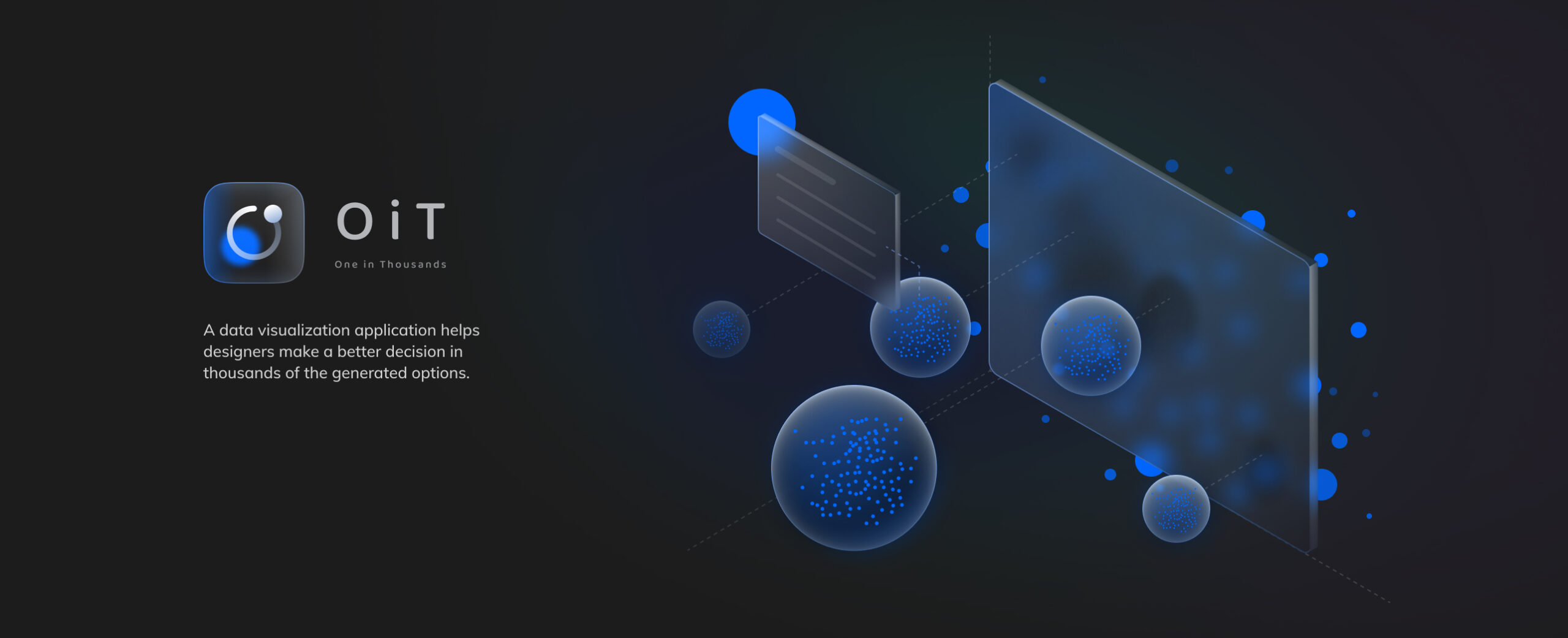
————————————
Context
Solo passion project
————————————
DOMAIN
Generative design, GenAI, Machine Learning, ACE, Architecture & Engineering, Manufacturing
————————————
CATEGORY
Generative design, AI, Machine Learning, ACE, Architecture & Engineering, Manufacturing
BACKGROUND
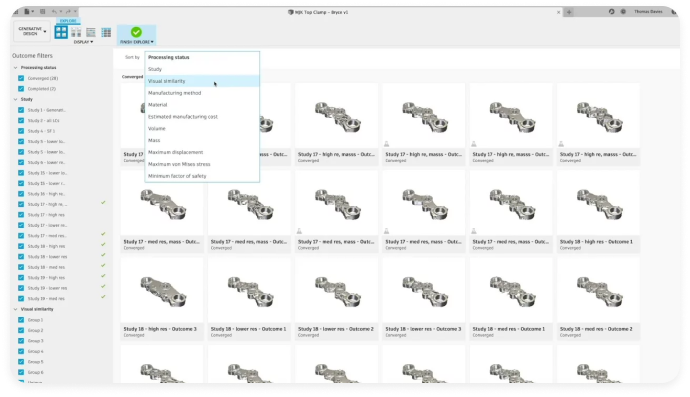
Generative design is a design exploration process. Designers or engineers input design goals into the generative design software. The software explores all the possible permutations of a solution, quickly generating design alternatives. It tests and learns from each iteration what works and what doesn’t.
PROBLEM
Intelligence systems can generate thousands of solutions that difficult for users to distill.
SOLUTION
An iPad-based data visualization dashboard helps users with decision-making through objective and subjective sorting in thousands of the generated solutions.
STEP 1
Requirments clarification
The system automatically analyzes requirements PDF and extracts the core metrics. Users adjust and prioritize the requirements, the design seeds can be generated based on the requirements.
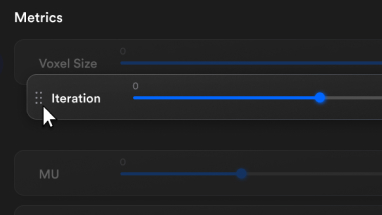
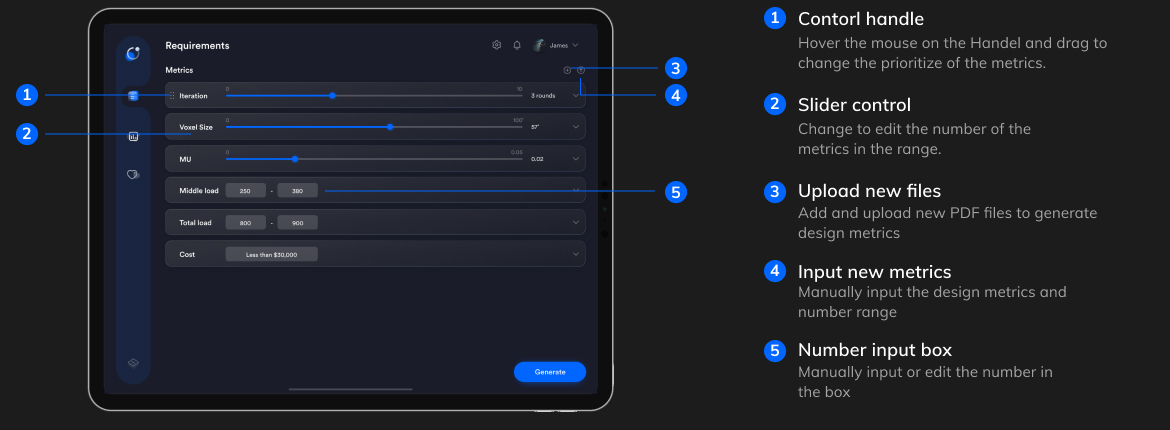
STEP 2
Generated design details
Interactive data chart showing iteration results, data flow, and all design options.
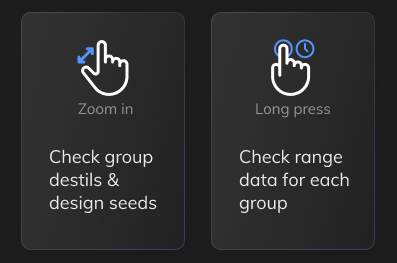
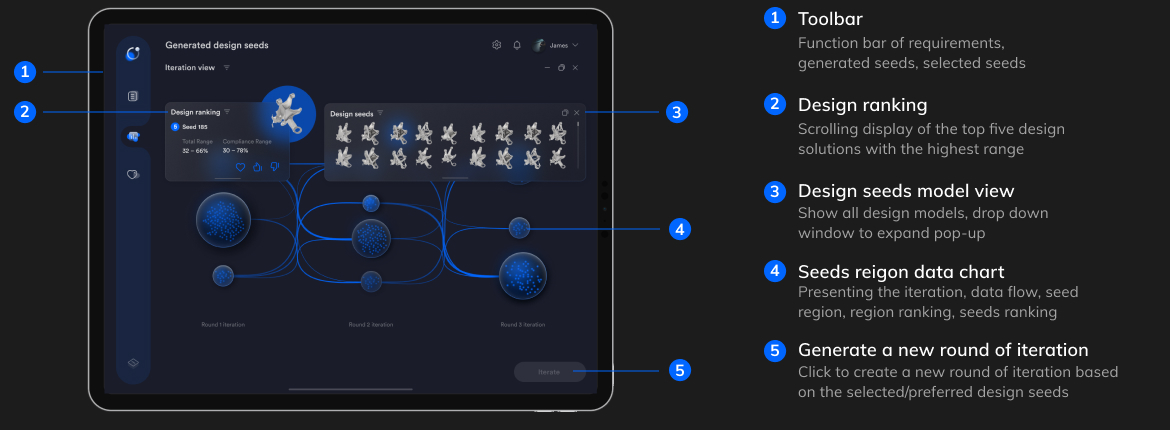
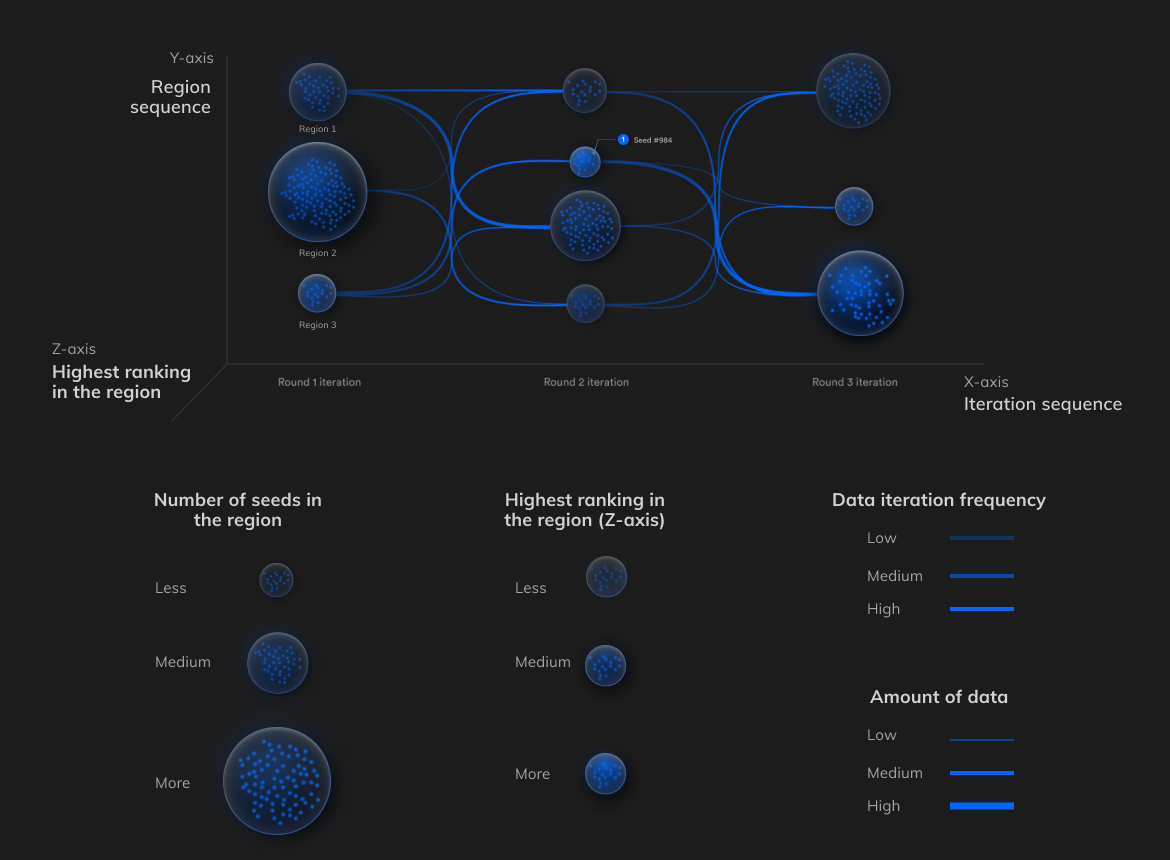
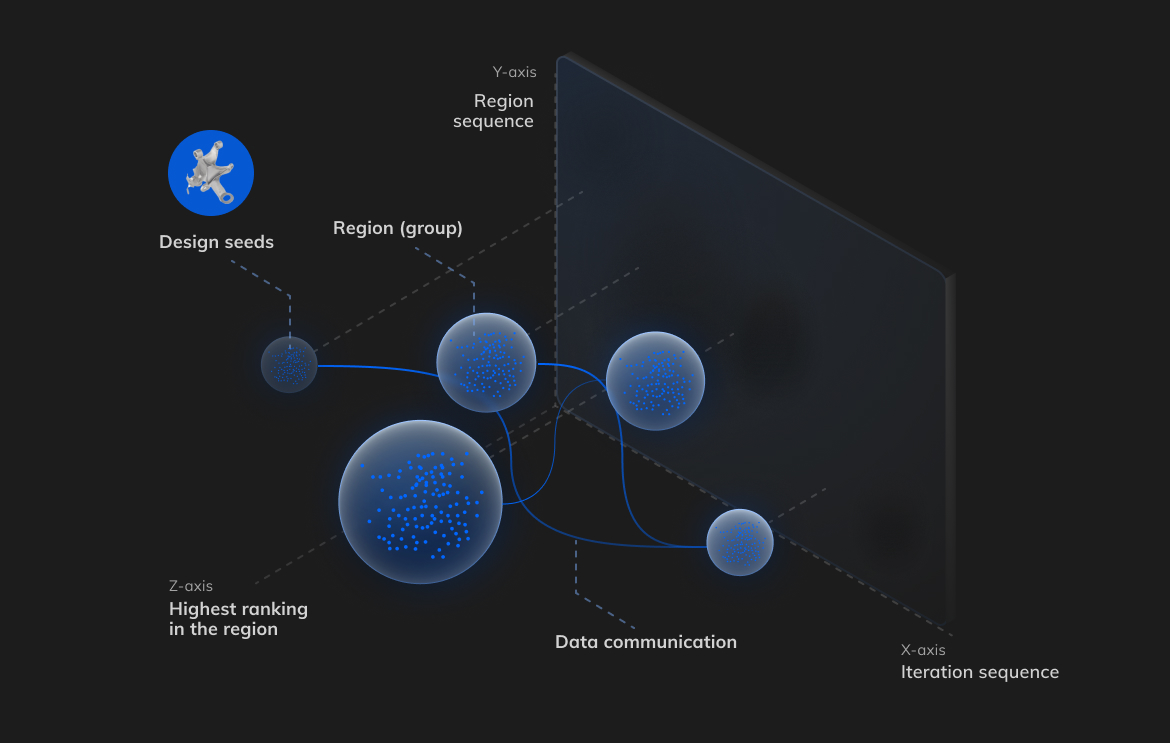
STEP 3
Objective filtering based on design metrics
Checked the details of each design seed. Filtered out and selected the seeds that fit the requirements range.
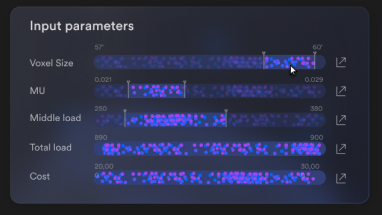
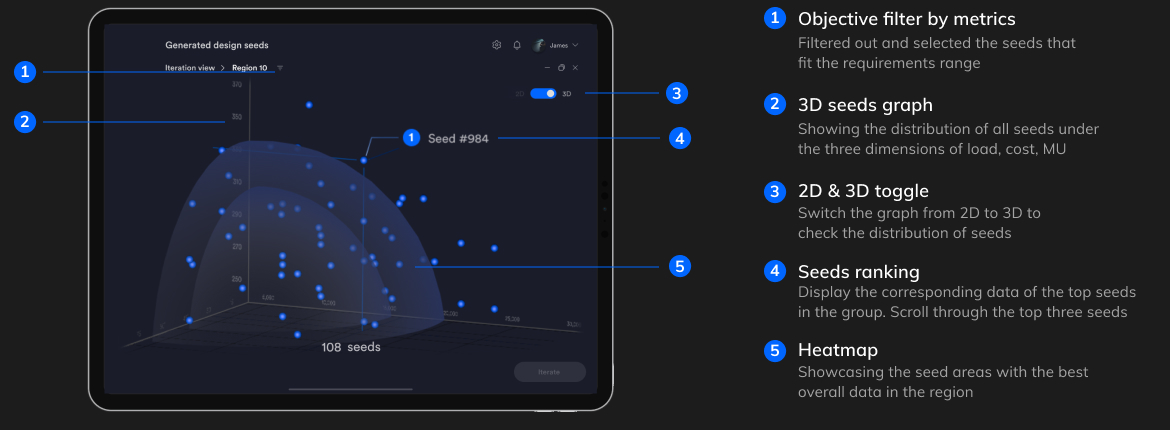
STEP 4
STEP 4
Subjective decision based on generative iteration
Based on user-selected seeds, generate a new round of iteration to a result that better matches subjective decisions.

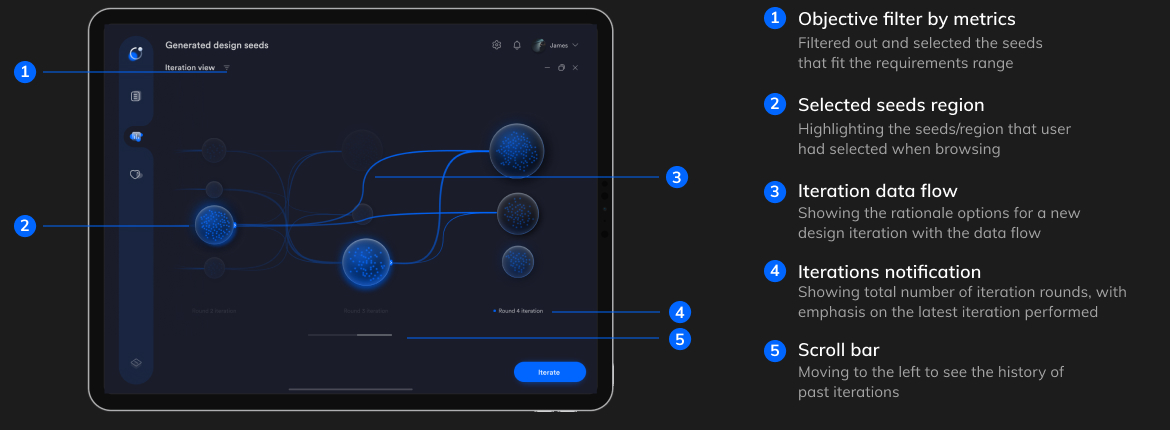
STEP 5
Compare among the selected seeds to make the final decision
After users selected the seeds which they preferred based on objective filtering and new rounds in the iteration; they could check the selected options and compare them to make further selections.

How did I get there?
How did I get there?
BACKGROUND
What is generative design?
Generative design is a design exploration process. Designers or engineers input design goals into the generative design software. The software explores all the possible permutations of a solution, quickly generating design alternatives. It tests and learns from each iteration what works and what doesn’t.
PROBLEM
The intelligence system generated too many objective solutions.
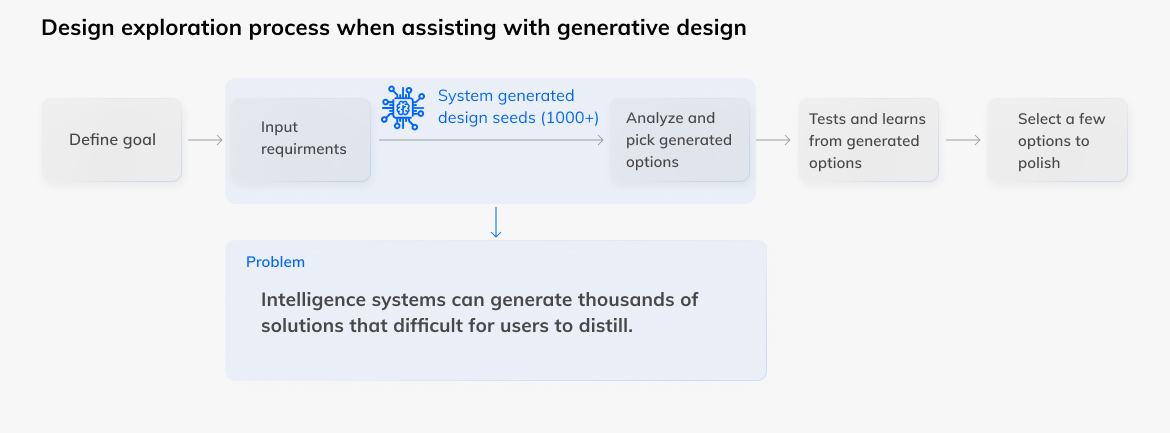
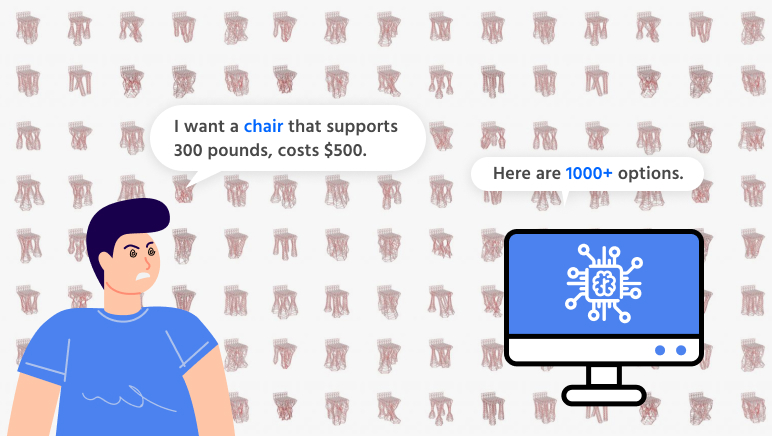
The problem in the generative design is The intelligence system generated more than thousands of objective solutions based on requirements, that are extremely hard for users to pick up from them. How might we provide subjective guidance to help users make decisions between thousands of options?
How might we
Help users make a decision from thousands of generated design options.
Phase I Research
What do I do when I'm looking for a suitable reference image?
To better understanding how people make the decision in tremendous design options, I conduct a cognitive walkthrough by myself. The task is to find an image that is an attractive poster with a dark background. During the research, I collected the pictures from different platforms, I conduct a competitive analysis to check how these products help users explore more design options.
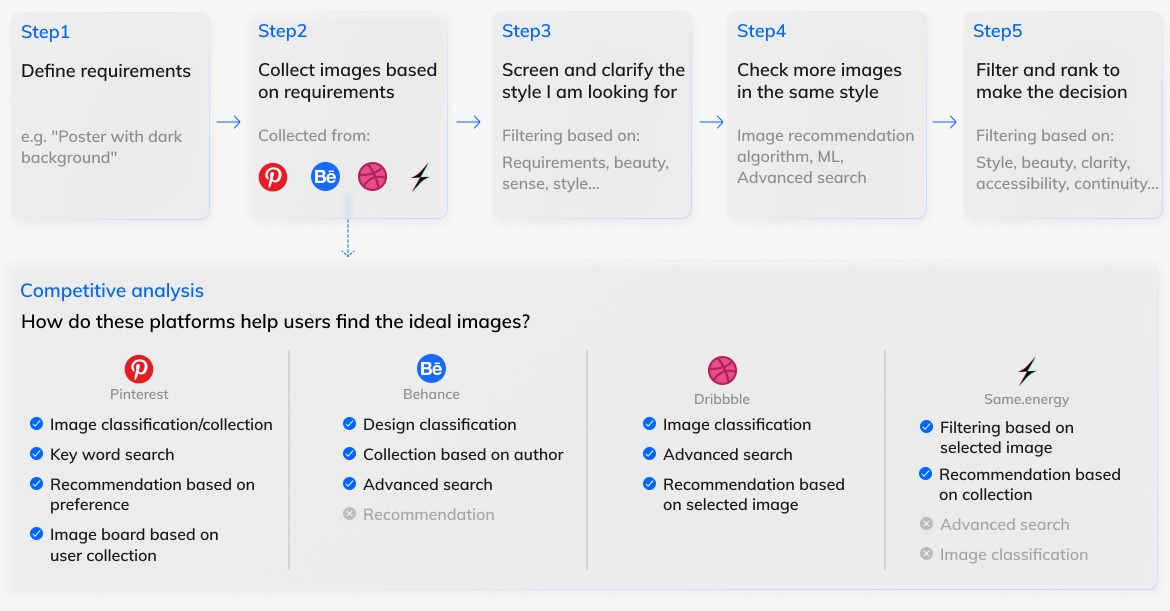
Phase II Research
How do our users select the generated designs?
To define the product user, I conduct a semi-structured user interview with six expertise in the industry.
• Who are your users?
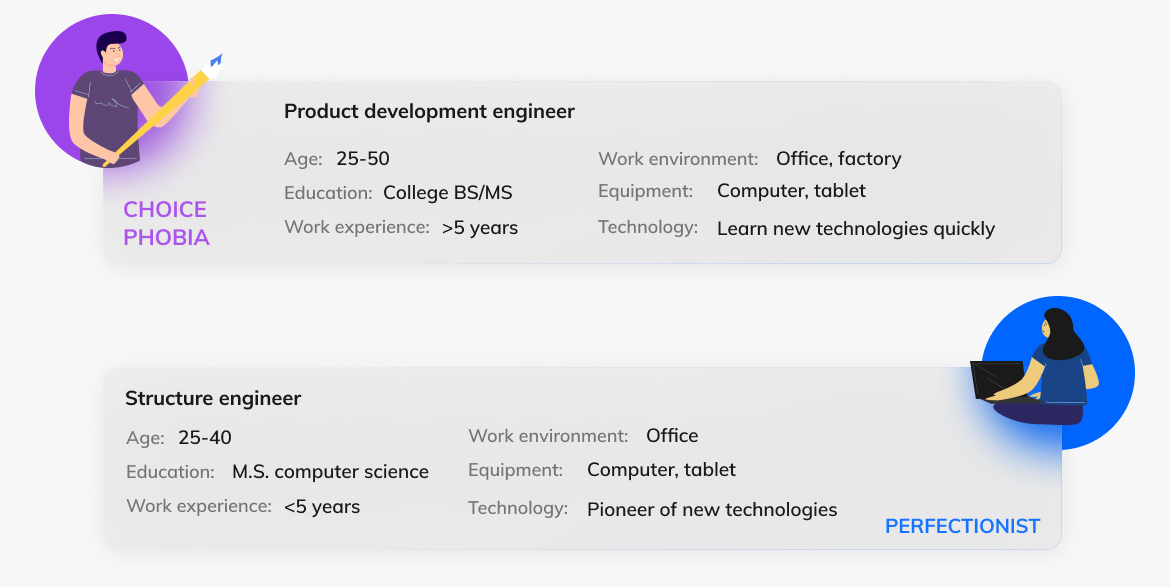
• How they do decisions on thousands of generated design options?
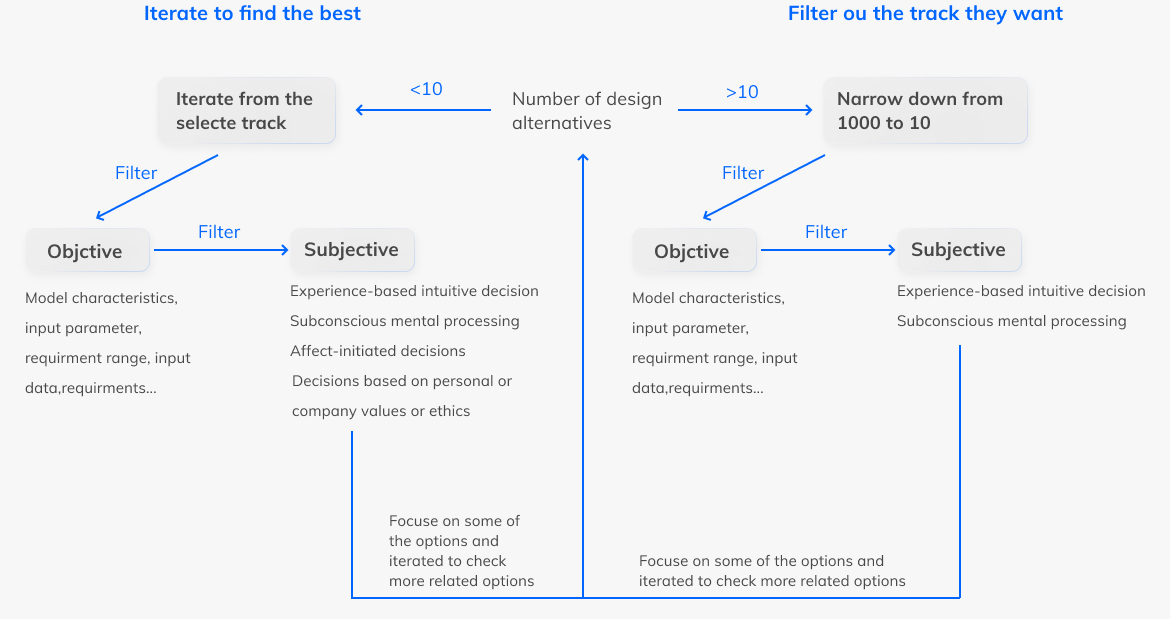
Research result - workflow
How OiT works to help make decisions?
Through the research, the problem and users are clearly defined. Therefore, the first step is building the workflow of the application. There are three main steps: upload the requirements, filter design seed by objective filtering and subjective iteration, and compare the selections to make the final decision
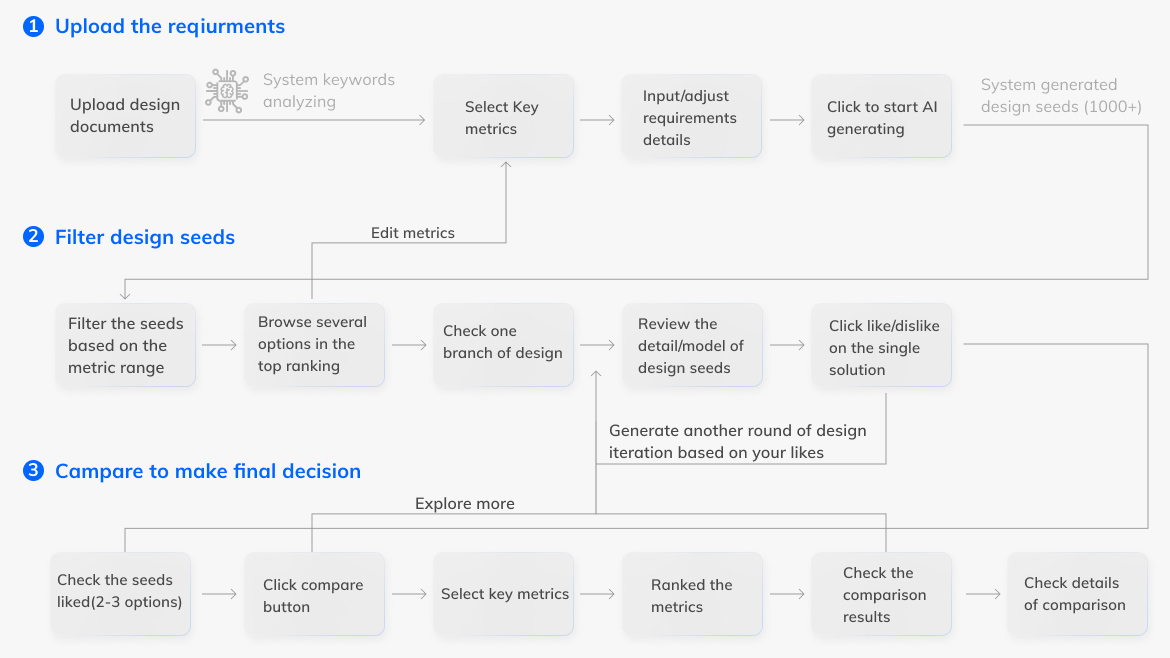


Design detail

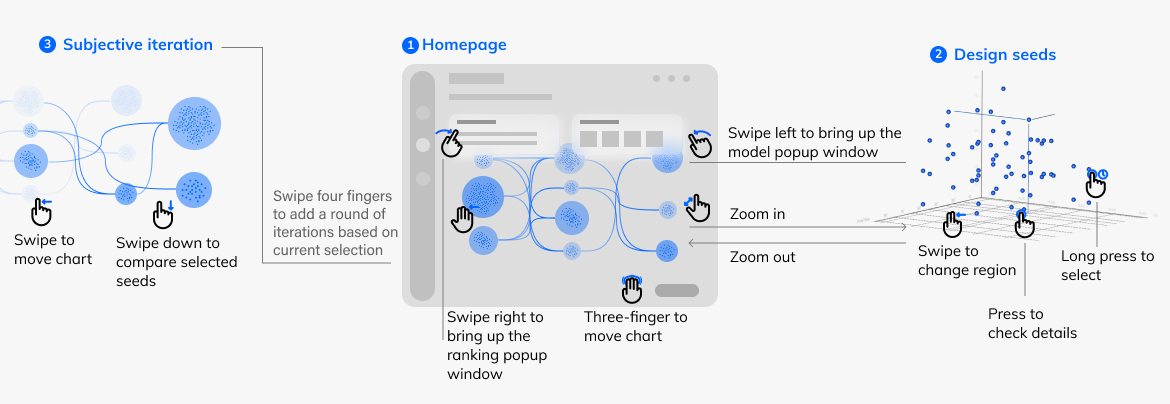
1. Hompage
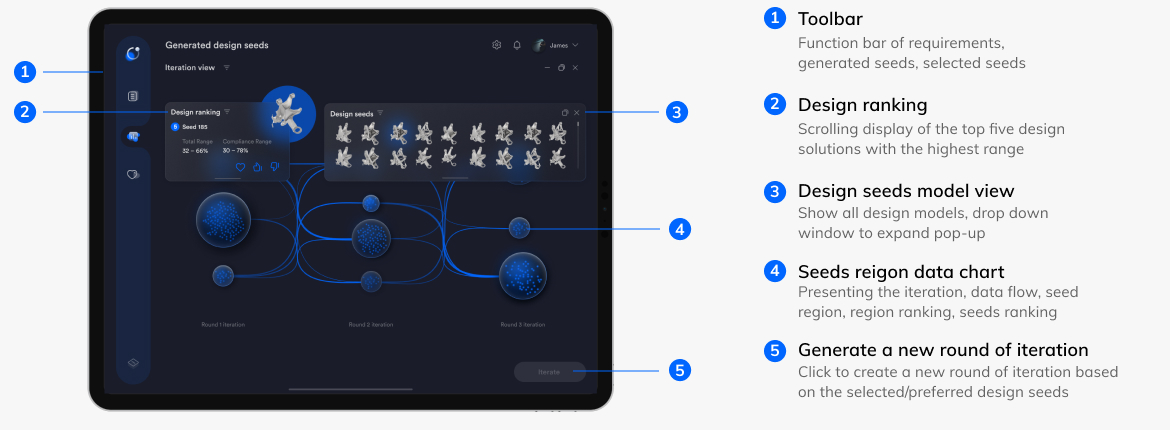
Homepage Design iteration
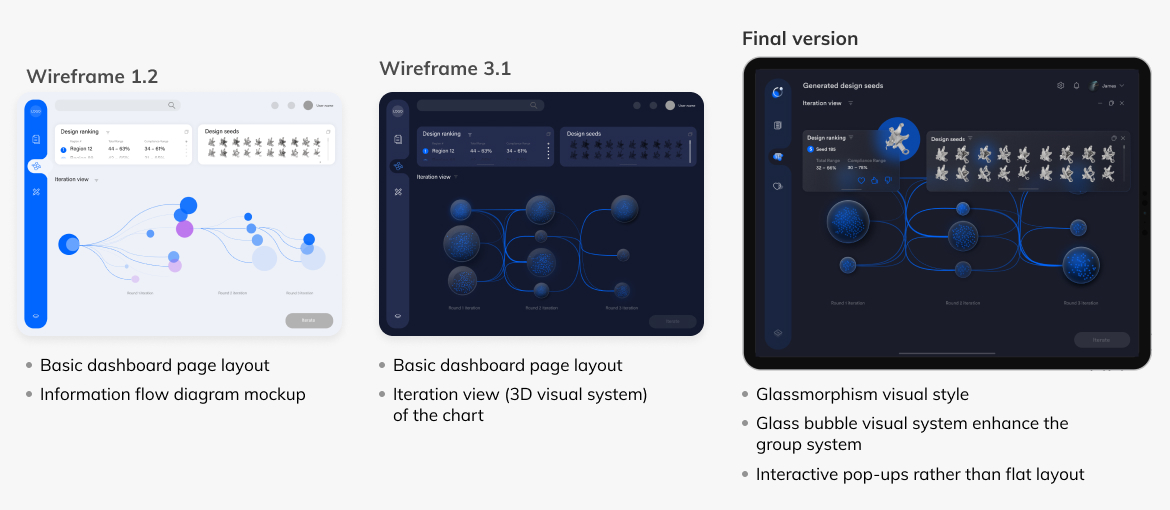
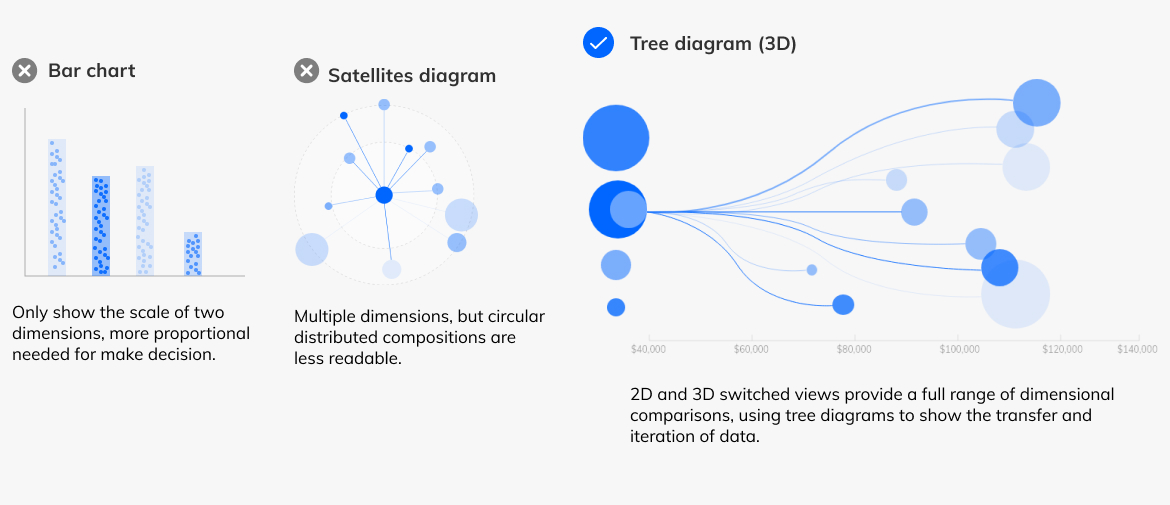
Wireframe


Visual Design
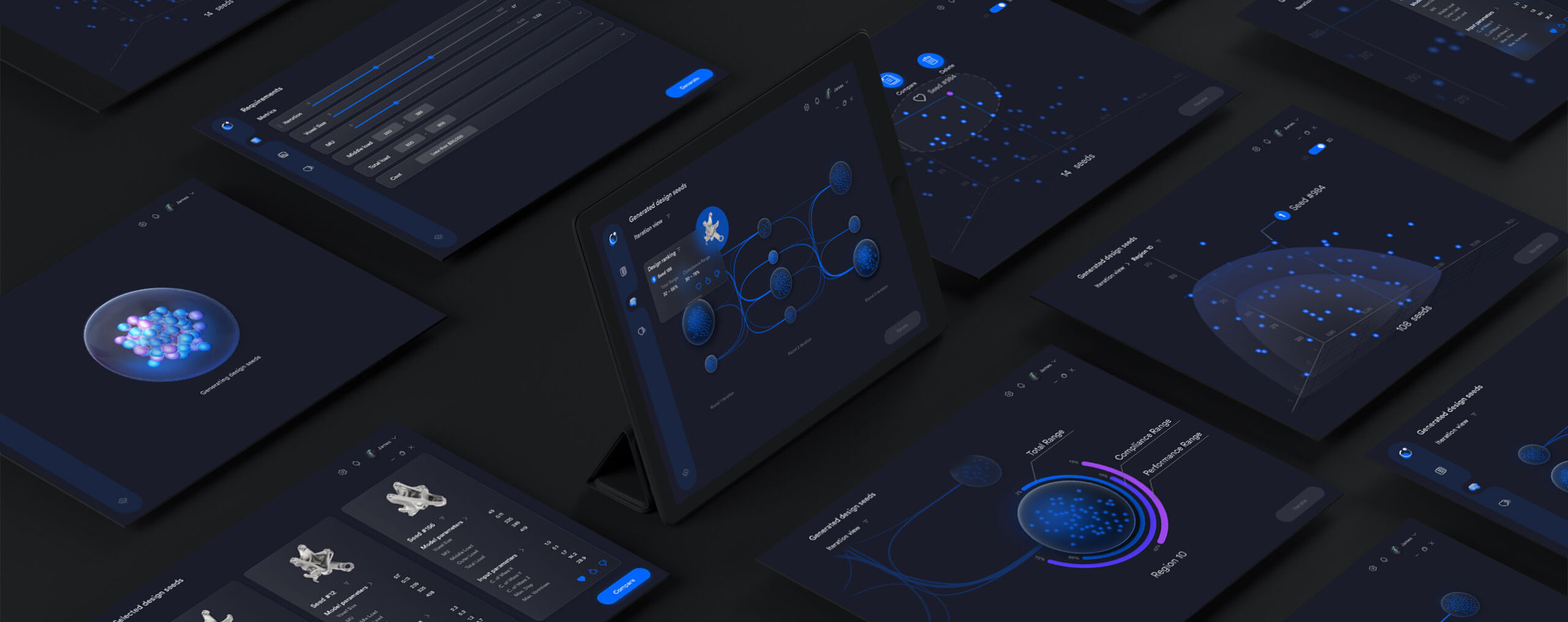
Visual language
I get the idea from different aspects to get the visual cue, then decide to focus on glassmorphism, indicating that the process of selection is the same feel from ambiguity to clarity.
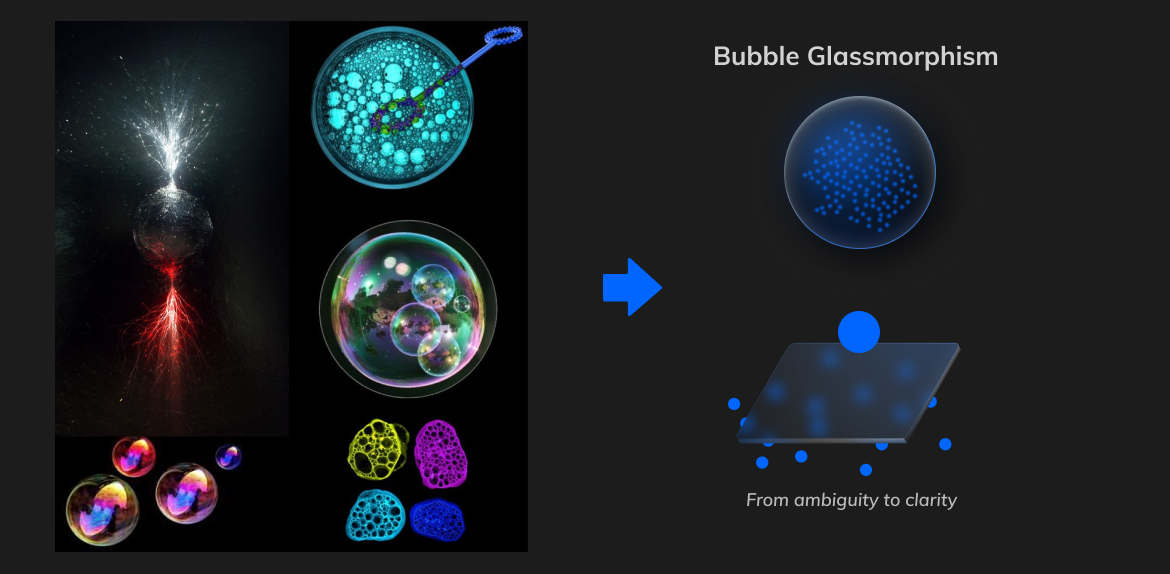
Visual system

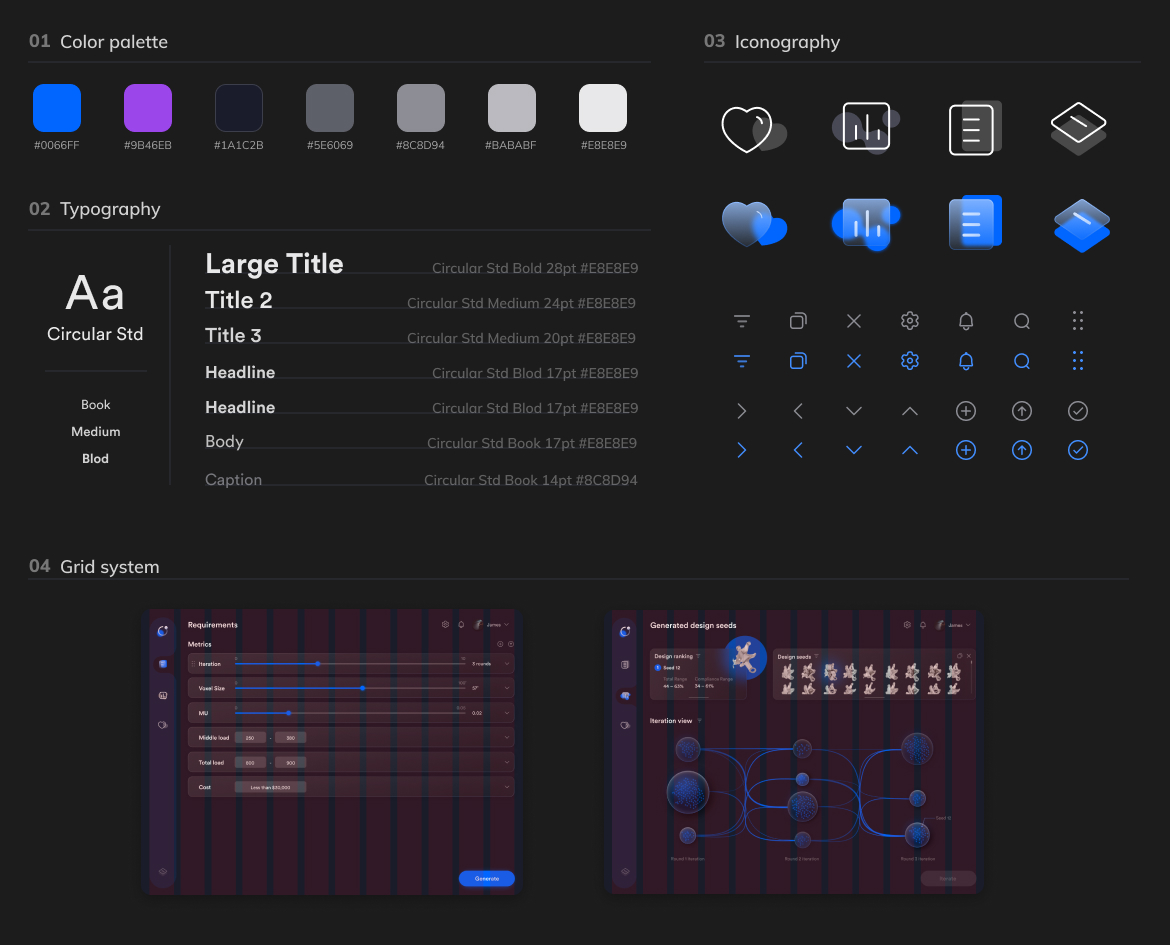
———
Thanks for watching, contact me if you want to know more
Thanks for watching, contact me if you want to know more

Copyright @Inken Zhou 2023 all rights reserved. All images, videos, and illustration in this site were created by Inken.
Copyright @ Inken Zhou 2023 all rights reserved. All images, videos, and illustration in this site were created by Inken.
